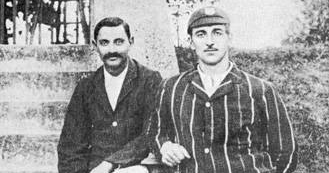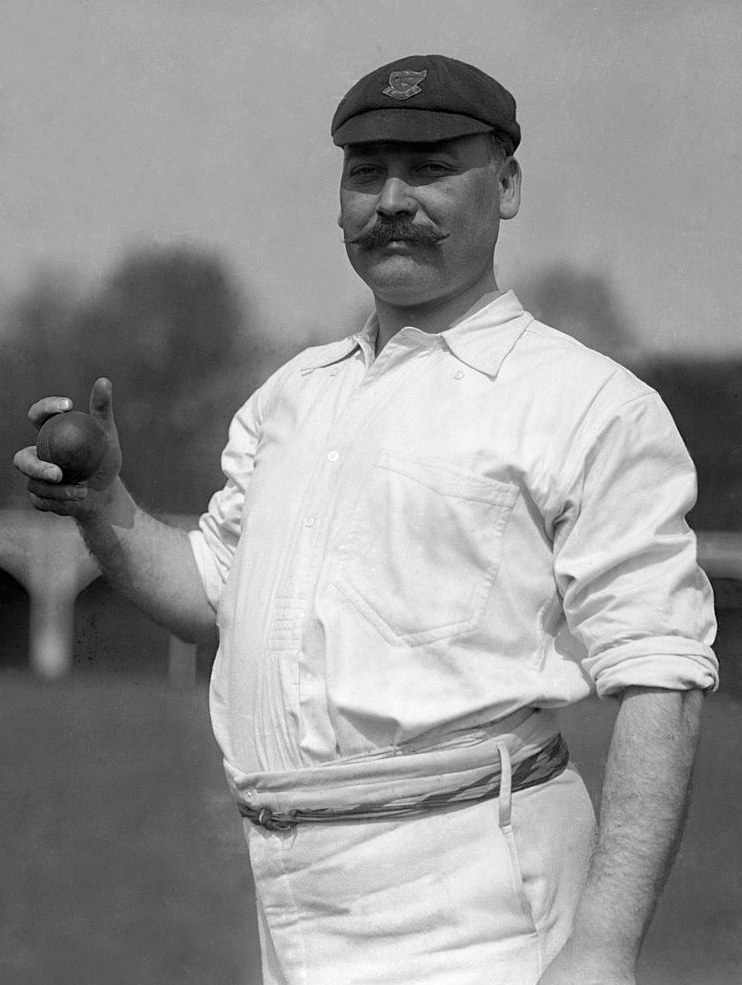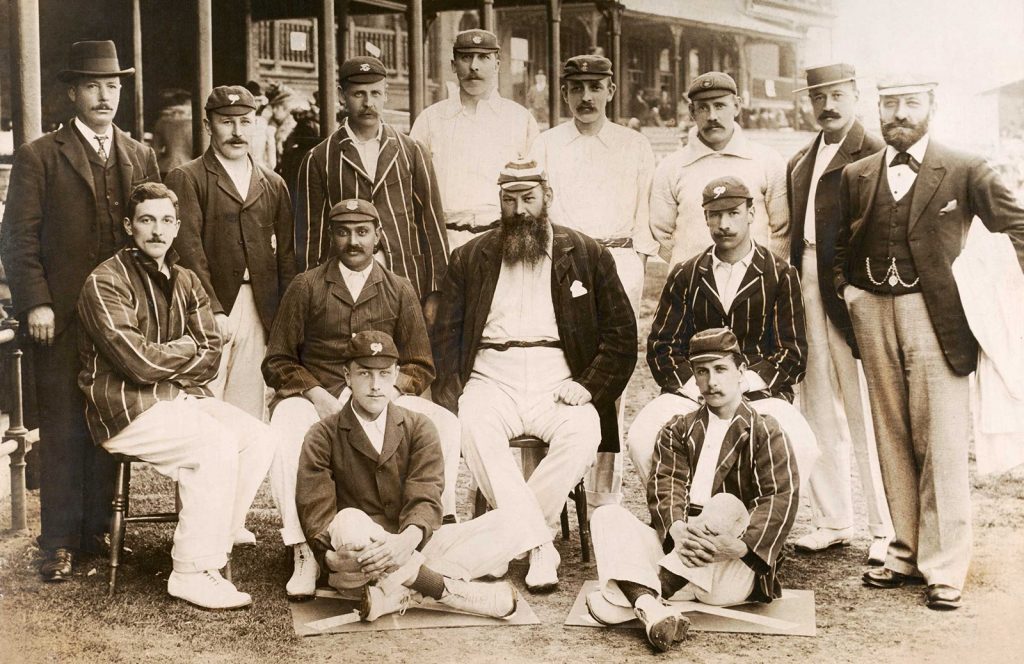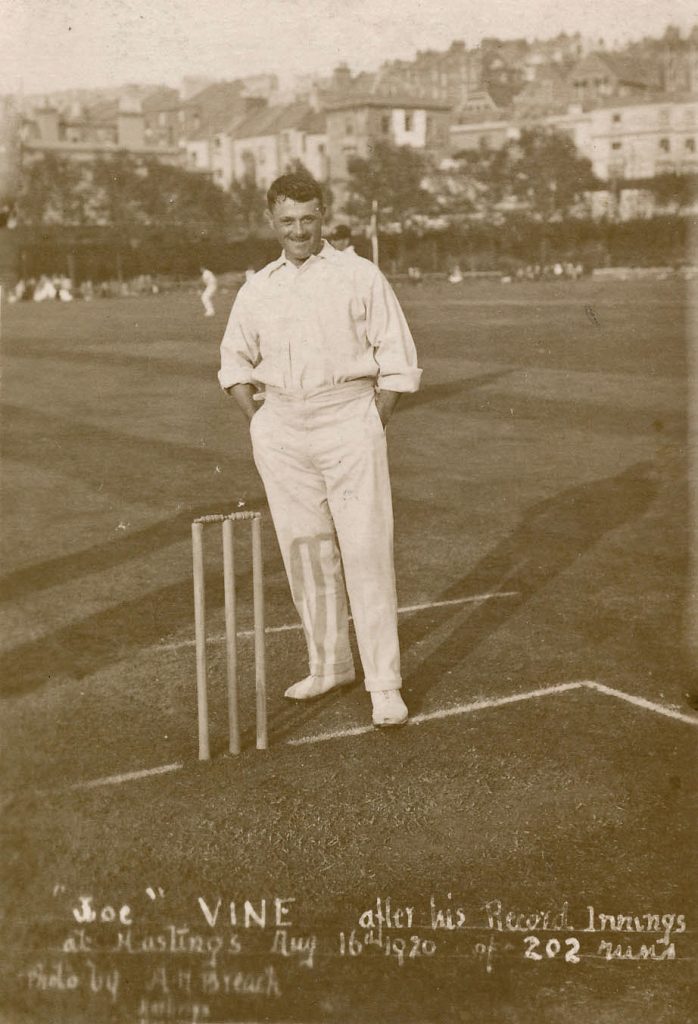The arrival of Ranji and Fry
With the arrival of Fry in 1894 and Ranji in 1895, the fortunes of Sussex slowly began to change. The years of their association with the club has been dubbed ‘The Golden Age’, more for the quality of batting than for the results on the field. Ranji’s debut for Sussex in 1895 at Lords saw him score 77 not out and 150 against an MCC team, and at the end of the match which was won by the MCC, the crowd gathered in front of the pavilion to congratulate Sussex and their newly found hero. With Ranji joining Fry in the Sussex batting line-up, the small Hove ground and the hard pitches made for big scores for the Sussex crowds.
The two players had contrasting styles. Ranji was elegant and was able with his excellent eye-sight to pick out the ball so well that he could cut the ball much later than was the norm. Fry was precise, correct and could pull to great effect and could drive better than most.


of the Sussex attack
1901- a record breaking year
In Ranji’s first season at Sussex he finished with an average of over 50 and included four centuries. It was an excellent start, but it got even better. A year later in 1896, Ranji scored 2,113 runs at an average of over 58 with eight centuries.
In 1901, Fry scored over 3,000 runs with six successive centuries. The only other player to get to 3,000 runs at that time was Ranji who had himself achieved the feat in 1899.
Several records were set in 1901 at Sussex – the most century partnerships (28), most innings over 500 runs (six), most runs in a season (12,312), record crowds (19,000 v Yorkshire) and a record partnership of 349. In addition to these achievements, Joe Vine, who played second fiddle to Ranji and Fry, achieved the double of 100 wickets and 1,000 runs.
In 1902, after the glories of Ranji’s and Fry’s batting, Sussex finished 2nd in the Championship. Although Ranji was nominally captain, he only took part in a dozen matches and did not play at all after the Australian game that began on 30 July. The main contribution to the team’s success came from the bowling of Fred Tate, who got 161 wickets. Tate played for Sussex for 15 years, but his best performances remained in the 1902 season.
A new pitiful record set
Sussex finished runners-up again in 1903 but thereafter their fortunes waned. After 1904 Ranji only played in 1908 and 1912 whilst Fry left the club for Hampshire in 1909. 1907 was a disastrous season as Sussex lost fourteen games out of twenty eight. The thirteen defeats in the Championship set a new pitiful new record for the County. There were some good performances, particularly from Albert Relf and Joe Vine, but overall there weren’t enough players performing at a continually high enough level. Sussex supporters would have to wait until after WW1 to witness something to cheer loudly about.

